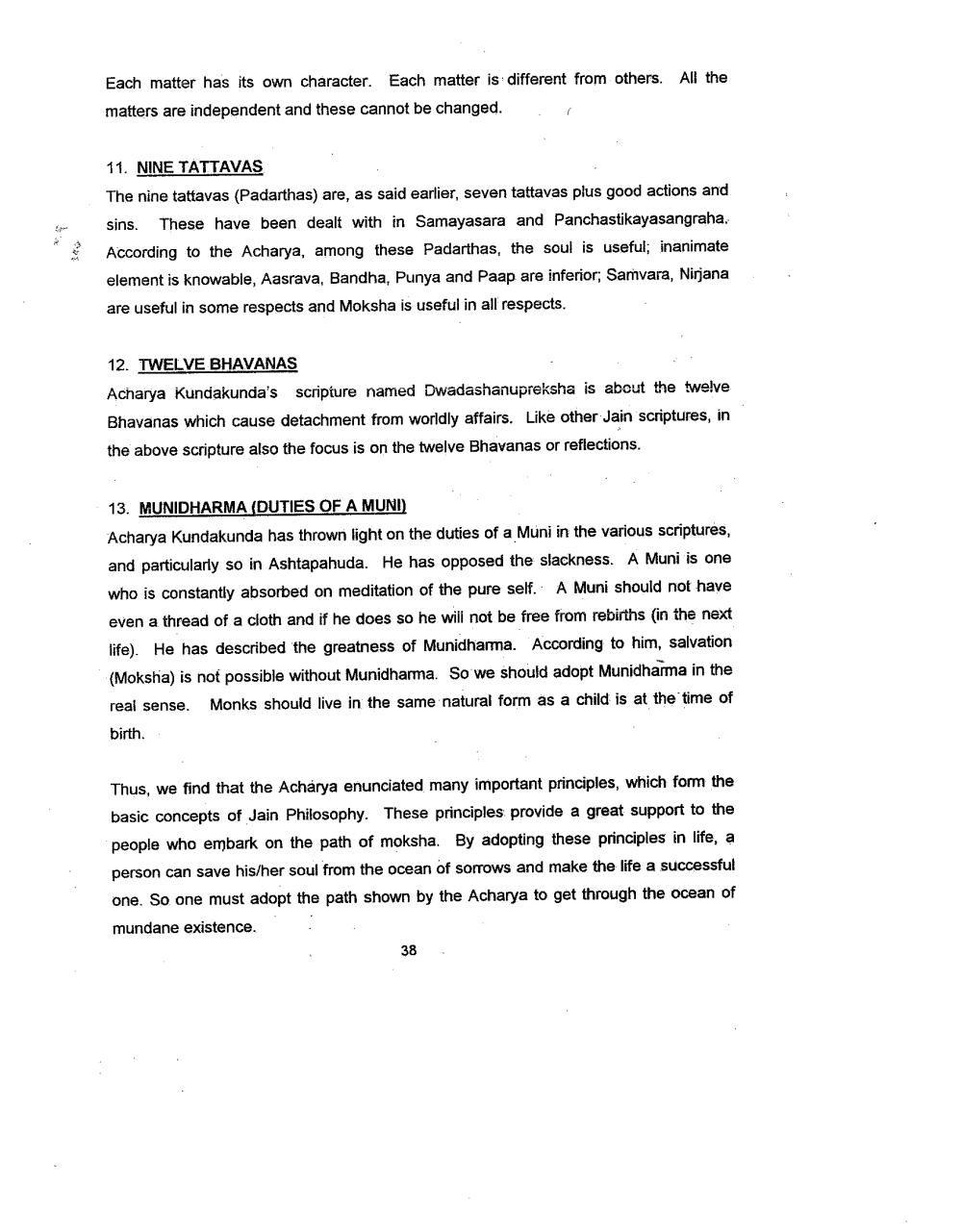________________
Each matter has its own character. Each matter is different from others. All the matters are independent and these cannot be changed.
11. NINE TATTAVAS The nine tattavas (Padarthas) are, as said earlier, seven tattavas plus good actions and sins. These have been dealt with in Samayasara and Panchastikayasangraha. According to the Acharya, among these Padarthas, the soul is useful; inanimate element is knowable, Aasrava, Bandha, Punya and Paap are inferior, Samvara, Nirjana are useful in some respects and Moksha is useful in all respects,
12. TWELVE BHAVANAS Acharya Kundakunda's scripture named Dwadashanupreksha is about the twelve Bhavanas which cause detachment from worldly affairs. Like other Jain scriptures, in the above scripture also the focus is on the twelve Bhavanas or reflections.
13. MUNIDHARMA (DUTIES OF A MUNI) Acharya Kundakunda has thrown light on the duties of a Muni in the various scriptures, and particularly so in Ashtapahuda. He has opposed the slackness. A Muni is one who is constantly absorbed on meditation of the pure self. A Muni should not have even a thread of a cloth and if he does so he will not be free from rebirths in the next life). He has described the greatness of Munidhamma. According to him, salvation (Moksha) is not possible without Munidharma. So we should adopt Munidharma in the real sense. Monks should live in the same natural form as a child is at the time of birth.
Thus, we find that the Acharya enunciated many important principles, which form the basic concepts of Jain Philosophy. These principles provide a great support to the people who embark on the path of moksha. By adopting these principles in life, a person can save his/her soul from the ocean of sorrows and make the life a successful one. So one must adopt the path shown by the Acharya to get through the ocean of mundane existence.
38




